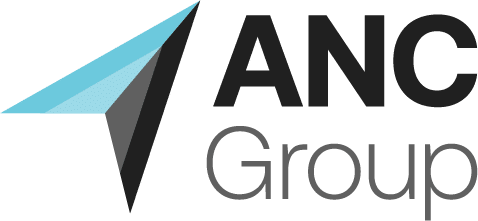Could your school qualify for E-Rate funding? This program could open the doors to much-needed technology upgrades and resources for your students. E-Rate funding is a government program that provides discounts on internet access, telecommunications services, and other technologies for eligible schools and libraries.
Use this guide from ANC Group to find out how to access funds to modernize your school’s technology.
Understanding E-Rate Funding
The E-Rate program is a federal initiative in the United States aimed at subsidizing telecommunications and internet access for schools and libraries. This program is funded by the Universal Service Fund (USF), which is managed by the Federal Communications Commission (FCC).
E-Rate Funding Criteria: Who Qualifies?
E-Rate funding criteria are inclusive and encompass various types of educational institutions:
1. Public, Private, and Charter Schools
Irrespective of their classification, all public, private, and charter schools have the opportunity to leverage E-Rate funding, which ensures equitable access to technological advancements.
2. Free and Reduced Lunch Program Participation
Participation in the Free and Reduced Lunch Program serves as a fundamental criterion. Schools with higher participation rates in this program receive a greater portion of E-rate funding.
3. Impact on Eligibility: The Crucial Role of Documentation
Accurate and comprehensive documentation substantiates a school’s eligibility. Ensuring all necessary paperwork is in place solidifies the school’s standing in meeting E-Rate criteria.
Understanding Technological Requirements
E-Rate funding criteria align with specific technological standards that schools need to consider:
Eligible Services and Products
Identifying the services and products falling within the E-Rate scope is crucial. This understanding enables schools to tailor their technological needs to align with funding criteria.
Meeting Minimum Technology Infrastructure Standards
Comprehending the baseline technology infrastructure required by the E-Rate program is essential. Schools must ensure their technological setup meets these standards to qualify for funding.
The Application Process
The application process for E-Rate funding involves several steps and deadlines to ensure eligible institutions can secure the necessary resources to enhance their technological capabilities. The application window typically opens in the last quarter of the calendar year and closes the first week of January.
Apply for an Entity Number
The first step in applying for funds will be to get your entity number. Without it, you cannot apply for funds. The Universal Service Administrative Company (USAC) assigns your entity number. Entity numbers can be assigned by calling the Customer Service Center (CSC) at (888) 203-8100.
Form 470
Next, you will submit Form 470, the Request for Proposal (RFP). This form outlines the services and products that schools or libraries are seeking, inviting potential vendors to submit bids. Institutions must post the Form 470 publicly and comply with a 28-day competitive bidding period, during which vendors can respond with their proposals.
Form 471, Funding Request Form
Following the competitive bidding phase, applicants must then fill out and submit the Form 471, the Funding Request Form. This form requires detailed information about the services selected, the chosen vendor(s), and the costs involved. Accuracy and completeness are vital as any errors or missing information can delay or jeopardize funding approval.
The deadlines for Form 471 submissions typically fall between the 2nd week of January and March 31, with specific dates announced annually by the Universal Service Administrative Company (USAC), the organization responsible for administering the E-Rate program. These deadlines are crucial, and missing them can result in the loss of funding for that funding year.
USAC Review
After the submission deadline, the USAC reviews the applications, verifies eligibility, and evaluates the requests for discounts. They may request additional information or documentation during their review process. Once the review is complete, funding commitment decisions are made.
The USAC issues Funding Commitment Decision Letters (FCDLs) to approved applicants, which details the approved discounts.
Accepting Contracts
Upon receiving the FCDL, institutions must review and accept the funding commitments. After acceptance, applicants and service providers enter into contracts and can commence services. It’s important to adhere to program rules and maintain documentation for compliance reviews, as the USAC conducts audits and site visits to ensure the funds are being properly used.
The E-Rate application process involves several critical stages, from the initial Form 470 release and competitive bidding to the Form 471 submission, review, funding commitment, and eventual implementation. Timely adherence to deadlines and meticulous attention to detail throughout each step are essential to successfully securing E-Rate funding.
Common Mistakes to Avoid When Meeting E-Rate Funding Criteria
Avoiding common pitfalls in the application process is critical:
Completeness and Accuracy
Ensuring all information provided in the application is accurate and complete is crucial. Any inaccuracies or missing details can lead to delays or rejection of the application.
Complying with Program Rules
Strict adherence to program rules and regulations is paramount. Failure to comply with these guidelines can jeopardize the school’s eligibility for E-Rate funding.
Providing Comprehensive Documentation
Supporting the application with comprehensive documentation is essential. Inadequate or insufficient documentation could disqualify the school from receiving funding.
Take the First Step Toward Technological Advancement With ANC Group
Ready to access E-Rate funding? Connect with ANC Group and let us transform your school’s technology. Don’t miss out on this opportunity to modernize your institution and provide your students with the resources they need for success.

